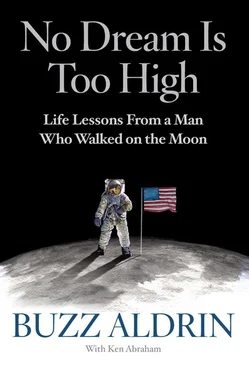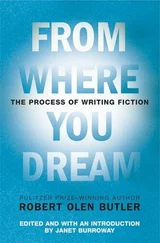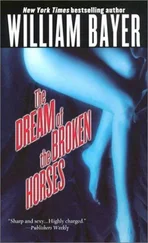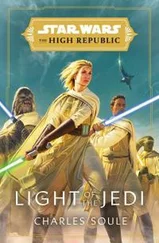No Dream Is Too High
Buzz Aldrin
with Ken Abraham
Life Lessons From a Man Who Walked on the Moon

Also by Buzz Aldrin:
Mission to Mars
Magnificent Desolation
Encounter With Tiber
The Return
For children:
Welcome to Mars
Reaching for the Moon
Look to the Stars
I dedicate this book to the dreamers, the out-of-the-box thinkers and seat-of-the-pants innovators like me: John Houbolt, Hubert Davis, Dick Battin, Charlie Bassett, Ed White, and Stephen Hawking.
But I dedicate this especially to my dear friends and Apollo 11 crewmates, Neil Armstrong and Michael Collins.
Buzz Aldrin is one of the most brilliant men I have ever met. Is he outspoken and opinionated? Oh, yes. Is he quirky? Oh, yeah. Is he eccentric at times? More than you can imagine!
But Buzz Aldrin is also one of the kindest men I have ever met. He has a heart that goes from here to the Moon and back. He is elegant and charming. He is a gentle man, generous to a fault, self-effacing, and intensely patriotic. He can be mildly irreverent, and he is one of the funniest people ever to walk on Earth or on the Moon.
Many people know Buzz from Apollo 11; others know him from his passionate speeches motivating the next generation of explorers to get their asses to Mars. Some people don’t understand him when he speaks, but I know him well enough to be able to fill in the blanks.
Some of the stories he is about to share, I’ve heard him tell many times; others are brand new, even to me. In the pages ahead, I’m excited for you to meet the Buzz Aldrin that I know. He has so much to share with us. He really does dream big … and for Buzz, dreams do come true!
Christina Korp Manager and Mission Control Director to Dr. Buzz Aldrin
• CHAPTER ONE •
THE SKY IS NOT THE LIMIT …
THERE ARE FOOTPRINTS ON THE MOON!

When I was a boy, some people regarded the statement “The sky is the limit” as a positive affirmation, implying that anything is possible. The truth is, the sky is not the limit. Nowadays, we can go much farther, and dream much higher than the sky.
I know the sky is not the limit, because there are footprints on the Moon—and I made some of them! So don’t allow anyone to denigrate or inhibit your lofty aspirations. Your dreams can take you much higher and much farther than anyone ever thought possible! Mine certainly did.
For years, men and women dreamed of reaching space—exploring the Moon, other planets, and even the stars. But it wasn’t until the 20th century that human beings experienced their first powered flight. In 1903, on a windy morning on Kill Devil Hills at Kitty Hawk, North Carolina, two young risktakers, Orville and Wilbur Wright, took to the air, defying gravity in their appropriately named plane, Flyer .
My mother, Marion Moon—yes, that was her real maiden name—was born that same year. A mere 66 years later, Neil Armstrong and I set foot on the Moon, fulfilling the dreams of millions of people and far surpassing the expectations of those who claimed that the sky is the limit!
Nowadays, when I speak to young audiences, they are often surprised to learn that the United States was not the pioneer nation regarding space exploration. In October 1957, while I was still serving in the U.S. Air Force and stationed in Germany, the Soviet Union pulled off an unexpected technological feat. They launched Sputnik 1, a spherical, polished-metal artificial satellite with four transmitting radio antennas. The satellite emitted an odd beep-beep sound that could be heard on radio frequencies in the United States and elsewhere as the weird object orbited the Earth, passing several times directly over major cities in the United States. Although Sputnik’s batteries ran out of power after only 21 days and the satellite eventually fell from orbit and was completely burned up as it reentered Earth’s atmosphere, the Russians had led the way into space.
A year later, America formed the National Aeronautics and Space Administration—NASA—with the goal of reaching space. The space age was born, and a “space race” between Russia and the United States began, with each nation pouring millions of dollars and thousands of man-hours into besting each other’s efforts. The term “space race” may have been a euphemism for the two nations’ competitiveness, but the tension was real. Following World War II, the United States and the Soviet Union had emerged as the world’s two great superpowers, both armed with nuclear weapons, facing off against each other in increasingly chilled relationships that came to be known as the cold war, with both nations suspicious of the other’s motives.
That’s why the world shuddered on April 12, 1961, when the Soviets achieved an incredible advantage by sending the first human into space, cosmonaut Yuri Gagarin, who flew in a spacecraft for one full orbit around the Earth.
The United States responded a few weeks later by launching America’s first “Project Mercury” astronaut, Alan Shepard, on a 15-minute, 115-mile-high, suborbital flight that touched the edge of space.
This was definitely impressive, and most Americans wondered, What could possibly be next?
* * *

PRESIDENT JOHN F. KENNEDY WANTED an answer to that question as well, so he asked NASA and its ranks of engineers and rocket scientists, led by the brilliant Wernher von Braun, what was possible. They informed him that it would take at least 15 years before we could put a man on the Moon. It is a little known fact—one that I learned only recently—that Kennedy did not initially want the United States to go to the Moon. He wanted U.S. astronauts to go straight to Mars! NASA’s leaders gulped hard and admitted to the president that Mars was out of reach, but the Moon might be possible within 15 years.
Rather than accepting what was “possible,” on May 25, 1961, just three weeks after Alan Shepard’s virginal flight, President Kennedy boldly challenged America to commit to the goal of landing a man on the Moon before the end of the decade! Many thought the challenge was impossible to meet. We had not yet even put a man into orbit. The rockets and spacecraft that we needed to go beyond Earth’s orbit didn’t exist. We didn’t have the know-how.
But we did have a leader with a vision—including the determination, courage, and confidence that we could get there. Even when the NASA chief later informed the president that it was going to cost twice the amount of their initial projections, the president stuck with his commitment. By publicly stating our goal and by putting a time period on a specific accomplishment, President Kennedy gave us no way out. We either had to do it or fail, and no one was interested in failing, especially with the Russians already peering over our shoulders from their spacecraft.
When I first heard about America’s space program from my friend and fellow fighter pilot Ed White, who had signed on with NASA, I was excited. If space was going to be our next new frontier, I wanted to be a part of getting there. So after I completed my tour of duty in Germany, I continued my education and received my doctorate in astronautics from the Massachusetts Institute of Technology (MIT). For my thesis, I adapted my experience as a fighter pilot during the Korean War, where I had focused on intercepting enemy aircraft, and devised a technique for two manned spacecraft to meet in space, a procedure called manned orbital rendezvous. Little did anyone—including me—know how critical this work would later be to our successfully landing on the Moon.
Читать дальше















